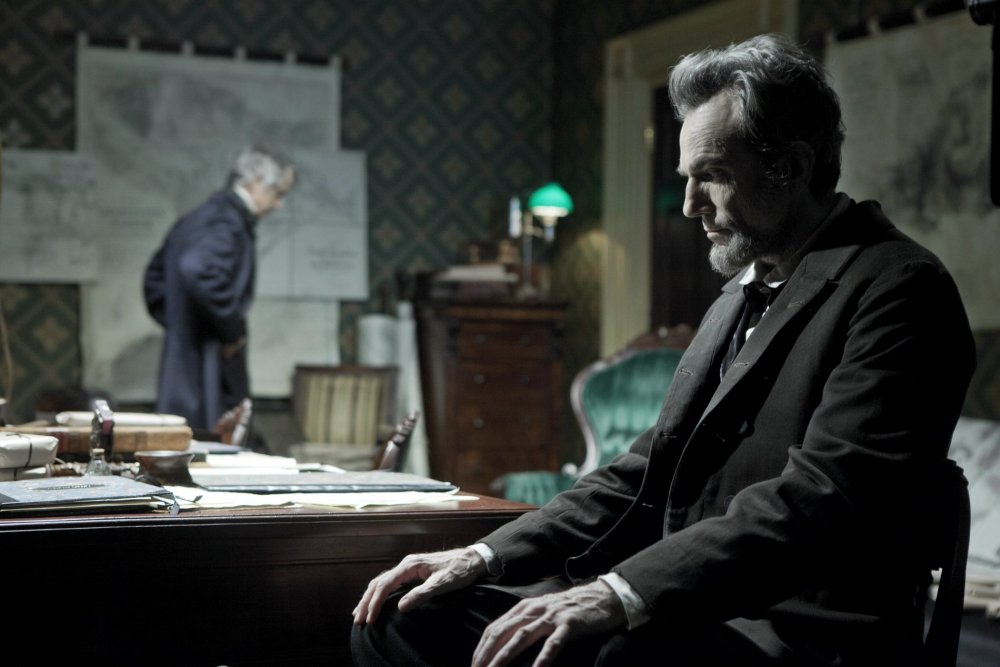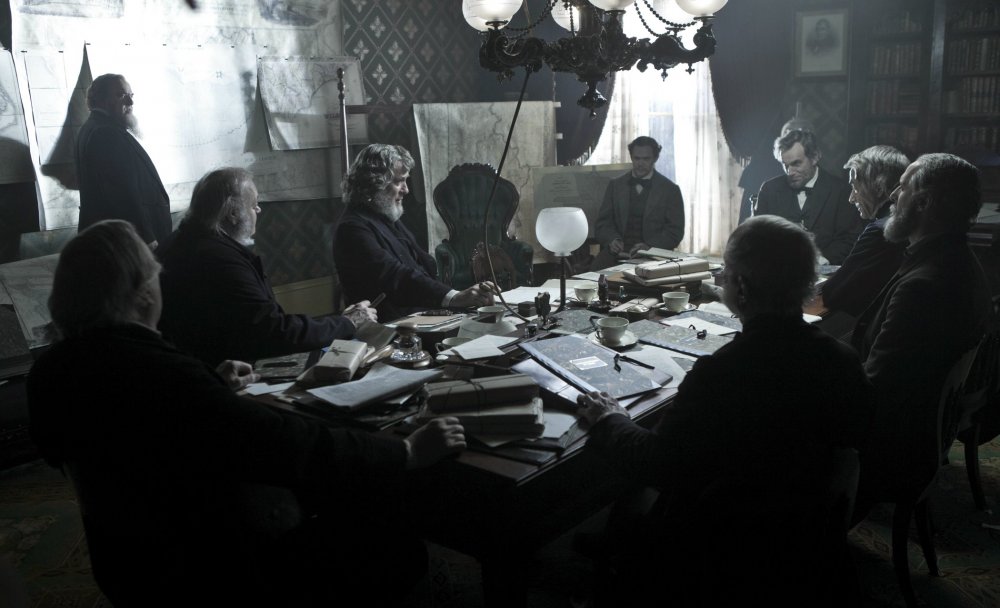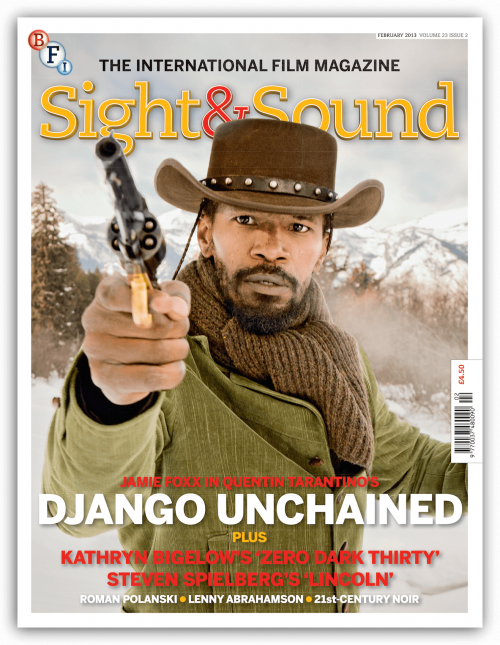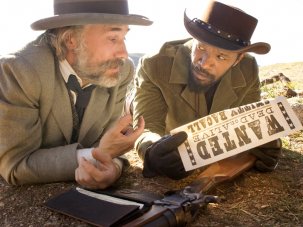from our February 2013 issue

The wheedling conversational style of America’s 16th president as described in Doris Kearns Goodwin’s book Team of Rivals: The Political Genius of Abraham Lincoln – dramatised here by Tony Kushner’s screenplay (which also draws from many other books) and embodied by Daniel Day-Lewis – could be described as ‘roundabout’. A great fan of prairie comedians, Old Abe liked to lead into business with a seemingly random yarn, as though to cut the tension, while sneaking in his point through the funny business.
| USA/India 2012 Certificate 12A 150m 16s Crew Cast Dolby Digital/DTS/SDDS Distributor 20th Century Fox International (UK) |
The opening scene of Steven Spielberg’s Lincoln has the president informally addressing Union soldiers in a smoke-blown encampment – the fog of war or the swirling mists of legend? Happily, in the main Lincoln takes an appropriately roundabout approach, finding Lincoln’s essence in the apogee of his final months, concerned principally with the backroom dealing behind the passage of the 13th Amendment.
Day-Lewis’s Lincoln cuts a solitary, often retiring figure, as though hiding out to escape being fitted with a halo; as the votes are tallied for the Amendment’s passage in the House of Representatives and John Williams’s orchestral treacle overflows, Lincoln is off playing with young son Tad, obscured in the White House drapery. And when Lincoln is felled by the assassin’s bullet, we are not shown the famous Sic semper tyrannis scene at Ford’s Theatre, but instead watch Tad receiving the news from the stage manager at Grover’s Theatre, where he is watching Aladdin and the Wonderful Lamp.
It is no mean feat to create surprise and suspense, as this scene does, around history’s foregone conclusions. In large part, Lincoln manages this by dramatising the relationship between speech and thought, thought and deed. It is a movie of minds being made up, so dependent on oratorical manoeuvring that there often seems little for Spielberg to do by way of signature ‘cinematic’ touches other than, with DP Janusz Kaminski, to pour shafts of backlighting sunbeams through windows into underlit rooms.
Unlike, say, the overpraised Aaron Sorkin, whose talkers tend to speak in a single hectic voice, Kushner has created a particular declamatory personality for each of his true-life characters. Making the rare attempt to approximate the reported nasal tenor of the historical Lincoln, Day-Lewis adopts a high, hoarse delivery that breaks into a nanny-goat bray on the rare occasions he allows himself to lose his temper in public. I say “in public”, for Lincoln contains emotionally violent domestic scenes with First Lady Mary Todd (Sally Field) that reveal a private hell from which Lincoln’s public life seems almost a respite.
There is a sense of ever-present self-regulation in this Lincoln, whose genial, colloquial, general-store manner disguises the shrewdness of a horse-flesh peddler. If he rarely directly reveals his intended purpose in his meandering approach – his cabinet members express exasperation at his failure to come quickly to a point – there’s no doubt that he knows a hawk from a handsaw. An early scene with some rural petitioners reveals both Lincoln’s common touch and his capacity for quickly sizing up whatever person he is speaking to, finding the right tone to strike. In some of the film’s most compelling moments, you even see him talking himself around to an idea.

In the molasses slick of Lincoln’s slow speech, the rash, plainspoken men whom he must corral become bogged down in unfamiliar contemplation. As the most formidable of these, Radical Republican leader Thaddeus Stevens, Tommy Lee Jones is on fine form, an ink-black wig sitting askance on his big, pocked head, very funny when he’s seizing the opportunity to pummel a helplessly stammering Democrat Rep or trenchantly wielding invective like a scourge – “Fatuous nincompoop” and “Pettifogging Tammany Hall hucksters” are among his effusions. (Lincoln’s convincing Stevens to hold his tongue is one of the film’s major plot points.)
Aficionados of the period will take a particular relish in seeing the whole wartime portrait gallery made flesh, including Lee Pace as Copperhead firebrand Fernando Wood in a Congress fairly swimming with excellent character actors, or Jackie Earle Haley (too short) as the semi-invalided Confederate vice president Alexander H. Stephens, whose delegation’s progress towards the Hampton Roads Conference is one of the breaks from the stifling containment of chamber drama. The other parallel narrative follows lobbyist W.N. Bilbo (James Spader, excellent as fatted, scuttling Washington vermin), employed by Secretary of State William Seward (David Strathairn) to seduce corruptible lame-duck Dems.
If Lincoln’s personality was defined by an easy traffic between the homely and the high-flown, Lincoln does not always handle the transition so well. Appropriately for a film about herding divergent personalities towards a greater good, it sometimes shows the conflicting pull of collaborative authorship – or perhaps of populist art? How could the same person responsible for the ingenious flanking manoeuvre of the assassination scene have vetted the hagiographic parting glance that black White House staffer William Slade (Stephen Henderson) casts after the noble silhouette of the Great Emancipator, marching into the annals of history? Finally, perhaps inevitably, Lincoln calcifies into a monument – but this shouldn’t overshadow the accomplishment of keeping him flesh and blood for so long.
And in the February 2013 issue of Sight & Sound
Mister freedom
Steven Spielberg’s Lincoln, the story of the president’s struggle to pass the abolition of slavery before the end of the Civil War, has attracted praise in the US – and criticism for its white perspective. But how does the film fit into the Spielberg oeuvre? By Graham Fuller.







